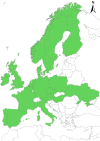An international study on implementation and facilitators and barriers for parent-infant closeness in neonatal units
- PMID: 36203512
- PMCID: PMC9523817
- DOI: 10.1002/ped4.12339
An international study on implementation and facilitators and barriers for parent-infant closeness in neonatal units
Abstract
Importance: Parent-infant closeness and active parent participation in neonatal care are important for parent and infant health.
Objective: To give an overview of current neonatal settings and gain an in-depth understanding of facilitators and barriers to parent-infant closeness, zero-separation, in 19 countries.
Methods: Neonatal intensive care unit (NICU) professionals, representing 45 NICUs from a range of geographic regions in Europe and Canada, were purposefully selected and interviewed June-December 2018. Thematic analysis was conducted to identify, analyze and report patterns (themes) for parent-infant closeness across the entire series of interviews.
Results: Parent-infant separation during infant and/or maternity care is very common (42/45 units, 93%), despite the implementation of family integrated care (FICare) practices, including parent participation in medical rounds (17/45, 38%), structured education sessions for parents (16/45, 36%) and structured training for healthcare professionals (22/45, 49%). NICU professionals encountered four main themes with facilitators and barriers for parent-infant closeness on and between the hospital, unit, staff, and family level: Culture (jointly held characteristics, values, thinking and behaviors about parental presence and participation in the unit), Collaboration (the act of working together between and within different levels), Capacities (resources and policies), and Coaching (education to acquire and transfer knowledge and skills).
Interpretation: Implementing parent-infant closeness in the NICU is still challenging for healthcare professionals. Further optimization in neonatal care towards zero-separation and parent-infant closeness can be achieved by enforcing the 'four Cs for Closeness': Culture, Collaboration, Capacities, and Coaching.
Keywords: Couplet‐care; Family centered care; Family integrated care; Neonatalogy; Parent‐collaboration; Parent‐infant closeness; Zero‐separation.
© 2022 Chinese Medical Association. Pediatric Investigation published by John Wiley & Sons Australia, Ltd on behalf of Futang Research Center of Pediatric Development.
Conflict of interest statement
Nicole R. van Veenendaal reports grants from Nutricia (the Netherlands) during the conduct of this study. Anne A. M. W. van Kempen and Sophie R. D. van der Schoor report grants from Nutricia (the Netherlands) outside the submitted work. Nutricia (the Netherlands) had no role in study design, data collection, data analysis, data interpretation, writing of the report, or decision to submit for publication. Nanon H.M. Labrie is funded through a personal grant awarded by the Dutch Organization for Scientific Research (NWO, VI.Veni.191S.032), which had no role in study design, data collection, data analysis, and data interpretation, writing of the report, or decision to submit for publication. In support of EFCNI and as an appreciation of the time and effort put into this study, EFCNI received a donation from the Emma Children's Hospital. Johannes B. Goudoever is a member of the Pediatric Investigation editorial board.
Figures
References
LinkOut - more resources
Full Text Sources


